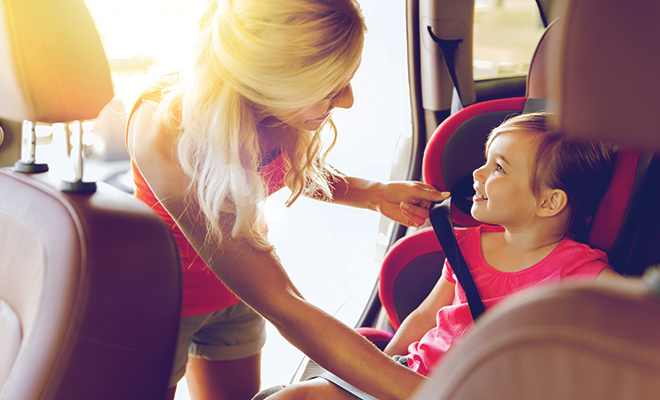
Safety for your little ones
When parents and grandparents think of safety for the small humans in their life, they see it as a daily, ever-vigilant act that requires eyes in the back of their heads and a healthy dose of risk management. November is Child Safety Protection Month, the perfect time to take a hard look at the potential dangers children face in everyday situations and to use this knowledge to prevent injury or death.
What are some of the key areas of child protection and safety? How can adults prevent potential mishaps without becoming over-the-top helicopter parents? Education and awareness are key. Here are some areas of primary focus for anyone who cares for a child.
Car safety
Government statistics are clear; motor vehicle injuries are a leading cause of death among children in the United States. But many of these deaths can be prevented by correctly installing a car seat, buckling children in size-appropriate car seats and knowing what ages to shift your child to booster seats. Using correctly installed car seats reduces the risk of death for infants one year of age and under by 71 percent; for toddlers aged one to four years, it reduces death and serious injury by 54 percent. Older children need to be taught to buckle up immediately. Seat belts that fit properly will have the lap belt lying across the upper thighs, not the stomach, and the shoulder belt lying across the chest, not the neck.
Food and choking safety
Finger foods and kids seem to go hand-in-hand, but in reality, many smaller foods are choking hazards for little ones. Hot dogs chunks, hard candies, grapes and nuts may be kid favorites, but they cause more than 40 percent of all childhood choking deaths. Non-food items are also choking culprits, so parents need to be vigilant about coins, marbles, keys, jewelry, paper clips, water bottle tops, safety pins, refrigerator magnets, small craft items such as jewels and even broken crayons.
Burns
Hot tap water accounts for nearly one in four of all scald burns among children and is associated with more deaths and hospitalizations than any other hot liquid burn. Hot liquids are the leading cause of nonfatal burns; because kids have thinner skin, they can be severely scalded at lower temperatures than adults. Water at 140 degrees Fahrenheit will cause a serious burn in three seconds; even at 130 degrees Fahrenheit, it can produce a burn in 30 seconds. Keep hot drinks such as coffee and tea out of the reach of small hands and always test bathwater before submerging little bodies.
Indoor and home safety
Your home is your sanctuary, but it’s also a place where kids can get hurt in a variety of ways. The TV is a frequent cause of injuries that are treated in the emergency room because of their weight and the fact that curious little ones can pull them down on top of themselves. Parents need to use brackets, braces or wall straps to secure unstable or top-heavy furniture to the wall and the television set should be anchored to something stable. Water inside the home is another area of concern; drowning is the leading cause of injury-related death among children between one and four years old. Babies can drown in as little as one inch of water and even toilets can be a source of drowning for toddlers.
Outdoor Safety
The best way to keep your wee ones safe in your back yard is to have adult supervision. Safety also comes from having a clean yard, safe play equipment and fences with gates to keep children from certain areas. Outdoor play equipment can be a lot of fun for kids; however, if it’s not put together properly, it can be dangerous. If you have a pool, do everything you can to ensure children cannot get into it unless a parent or other adult is present. Place a fence with a locked gate around it.
Poison control
Nine of ten poison exposures in children occur in the home. Parents should not store household cleaners, chemicals and soap in any low cabinet and keep medicines out of reach or in a locked cabinet. Children don’t know the difference between a cleaning liquid and a drink, so these items need to be stored accordingly. Keep the poison control center number posted in your kitchen and bathroom in case of poison ingestion. If you think your child or a child in your care has ingested a poisonous substance, call and get help immediately.
Children are the light of our lives, but young kids lack the skills needed to protect themselves against burns, falls, choking and poisoning. All kids count on parents and caregivers to keep them safe and teach them actions that will help protect them from injury. The world is not a scary place, but it is a place where opportunities for harm are present at all times. Education and proactive parenting are the best defense to keeping the next generation safe and well. ■
Sources: cdc.gov, esfi.org, parentguidenews.com and safekids.org.







